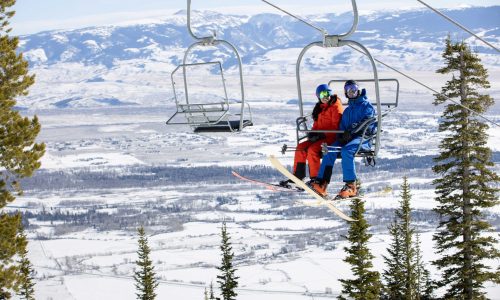Home » Gear Reviews » Ski & Snow » Ski Jackets » Heavily Insulated Ski Jackets » Volcom Pat Moore Insulated Jacket
Volcom Pat Moore Insulated Jacket Review
October 18, 2015 74
74 The Good
- Inexpensive
- Good stretch
- Warm
The Bad
- Less breathable than others in the test
- Fit not as dialed
Volcom’s Pat Moore is a stylish insulated jacket aimed primarily at front country snowboarders. It comes in at a reasonable price.
Durability
The Pat Moore has pretty burly and stretchy “Duck cloth” face fabric that should stand up to lots of abuse. There are more seams on the jacket than most in the test—typically a weak point—in the name of fashion.
Weatherproofness
Like the other coats here, its got a long hemline, tall collar, and big hood. It’s got taped seams so it should be good to go in all but the most persistent rainstorms. The powder skirt zips to pants in Volcom’s line, so creates a suit that keeps snow from getting packed into the rider’s torso in a wipeout.
Breathability
The Pat Moore is rated to 10,000 grams of vapor that can pass through a square meter of fabric during a 24-hour period. Most membranes like Gore-tex and other brands can do 20,000, so it’s a bit less breathable, though most insulated coats will effectively breathe a bit less. The Pat Moore does sport a pair of sizeable mesh-backed pit zips, which is probably the more important consideration in an insulated ski coat.
Features
The Pat Moore has six pockets, including an interior goggle pocket and chanel for headphones. The powder skirt has a zipper that will connect to most Volcom snow pants, creating a drier suit.
Function
The Pat Moore is aimed primarily at front-country snowboarders, so the designers didn’t worry as much about weight or stash pockets for climbing skins. The weatherproofing and breathability are absolutely solid for frontrange use and the jacket kept us plenty warm even in the notoriously cold Tetons.
All the ski jackets and pants reviewed are tested by the same five criteria; materials, features, weatherproofness, temperature control and fit/comfort. All the pieces were tested over multiple days in a variety of conditions to see how they perform throughout an entire ski season. Testers do all they can to try out every piece on the same day to compare each one in similar conditions and they get out on lots of days to test the jackets in a range from sunny spring days to stormy wintery days to see how they hold up.
For materials, the specifications provided by the brands is often very important. These specifications tell us what type (if any) and amount of waterproofing or insulation a jacket may have. With a wide variety of third-party insulating and waterproofing materials available, as well as the recent rise of “in house” proprietary materials being used, it is important to know exactly what fabrics and insulations are being added to each piece in an effort to distinguish what makes one piece better than the next. Since testers typically only have only one season to test these pieces, durability is determined in part by any obvious fraying, ripping or other signs of reduced durability.
Since heavily insulated jackets are primarily intended for lift accessed skiing and riding there is an expectation that features will be tailored to provide the ultimate in comfort and convenience when on the mountain. This means that features such as a powder skirt, pockets for gear, a dedicated pass pocket, a helmet compatible hood, and wrist gaiters are all expected and then extra features such as a RECCO reflector or insulated phone pocket are considered a bonus.
The weatherproofness of a jacket first depends on what the intended purpose of the jacket is and then is based on the specifications that the brands supply. Since most heavily insulated jackets will be used at the resort under cold conditions there is an expectation that the jacket be able to shed blowing snow for the stormiest of days yet also fairly breathable. Since these jackets are for very cold weather, waterproofness isn’t as necessary.
The temperature control of a jacket is also based on the specifications that the manufacturer provides. The line between a lightly and heavily insulated jacket isn’t clear cut but generally one would expect to use a heavily insulated jacket primarily when the temperatures drop well below freezing and need to still be comfortable when the day proceeds to get even colder. The jackets are then rated to how well they do in very cold temperatures and more importantly how well the jacket does when the temperatures fluctuate which is a common occurrence for any regular snow sports enthusiast. Breathability plays a big factor here because the breathability of a jacket will affect how warm or cold one feels as heat generated while skiing and then go sit on a long chair lift afterwards. The ability to fully unzip pit zips is a crucial part of temperature control since that is often the largest factor in preventing overheating.
Lastly, the fit and comfort category is fairly subjective but having multiple testers use the product provides for a good range of body shapes and opinions. Factors that are important here are how long or short a jacket is and if it is true to size. For determining comfort, the amount of stretch the jacket has and how soft it is on the inside often plays into the rating.


















